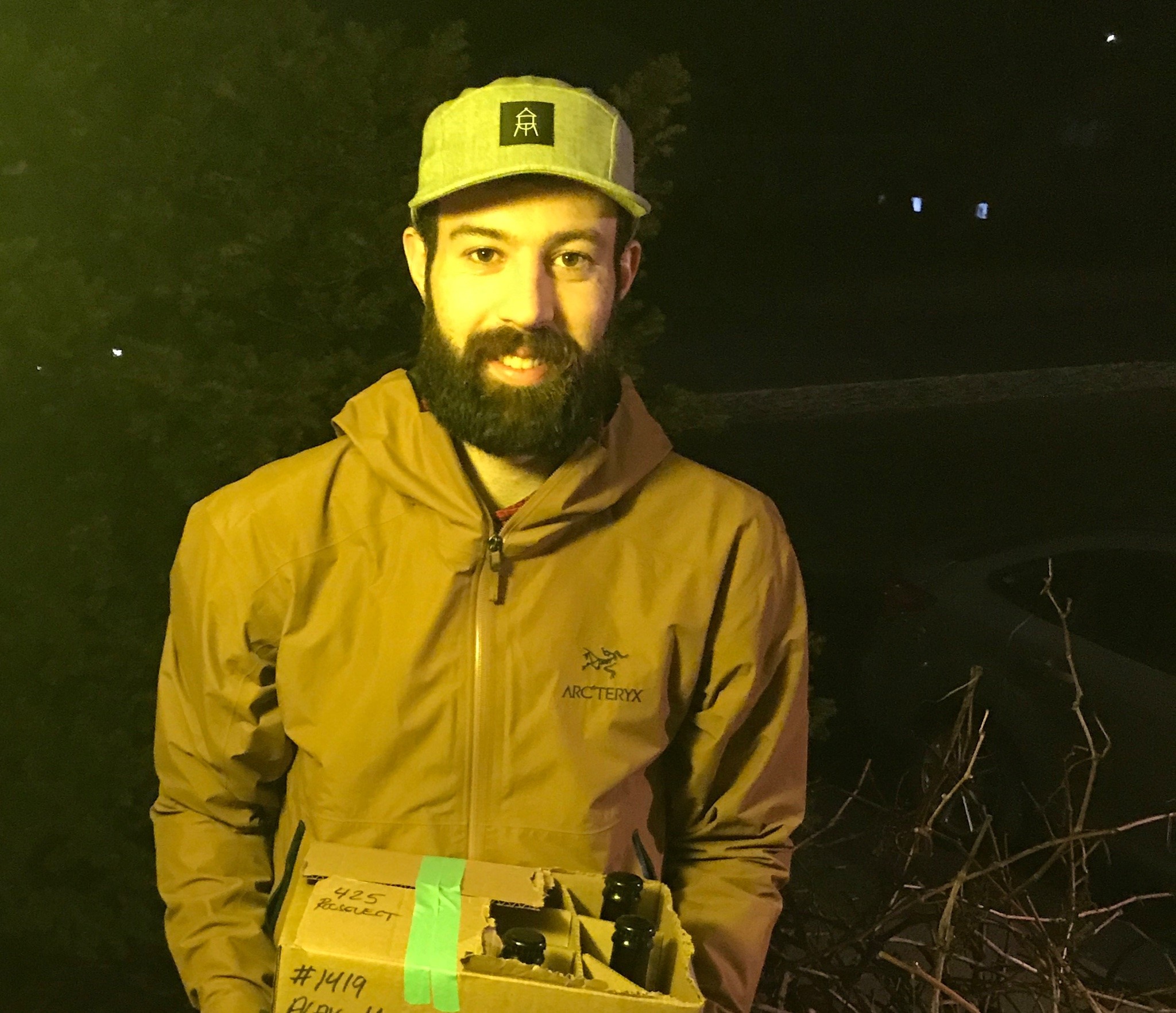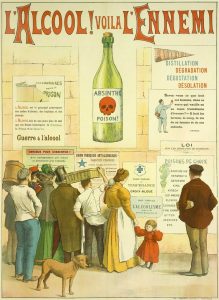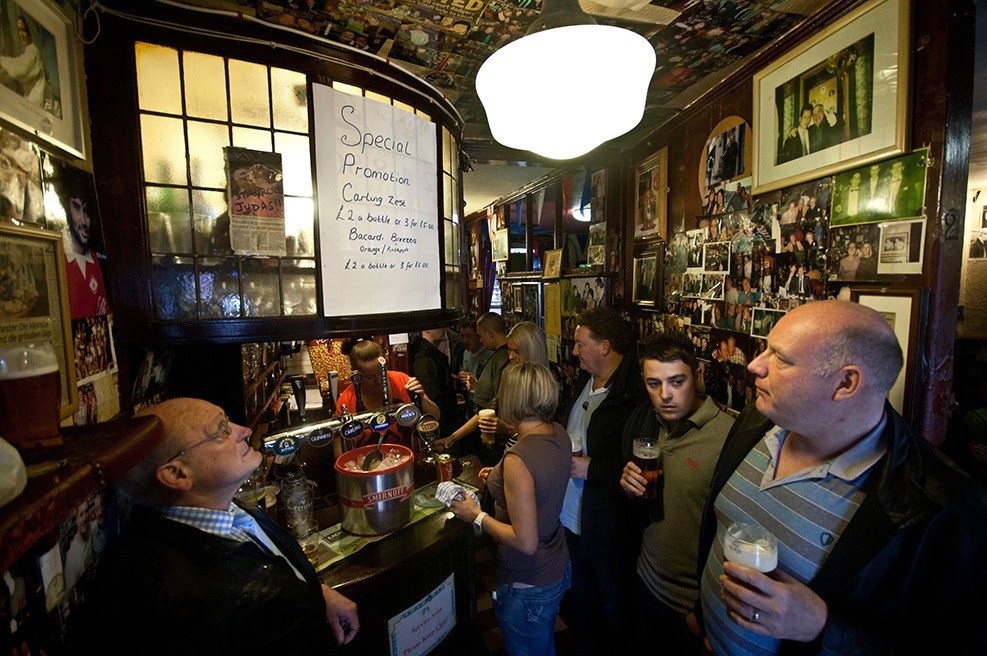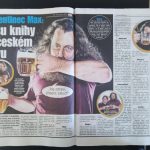Another quiet day. Sitting at home. My butt is in a state of perpetual “sat too much” ache now. I better lay down for a bit to see if it goes away. On the upside, the over-wintered carrots have been crisp and sweet. Gotta eat them now before they start to convert and prepare for flowering. As shown above, I saw bees this week. Wild ones I think. Grabbing all there was to be gotten from the flower of a willow tree, the catkin turning in one last very slow fireworks display.
Beer… hmm… where to start… Jordan posted an interesting proposal to encourage the use of locally grown hop in Ontario.
This is Ontario. It is four times the size of Great Britain. A run from Windsor to Vankleek Hill would take eight hours if you adhered to the speed limit and there weren’t any delays on the 401. The idea that there is such a thing as an Ontario specific cultivar is nonsensical. We’ve already established that Hallertau grown in Germany and New Zealand is different. The Huron Coast isn’t Tillsonburg isn’t The Golden Horseshoe isn’t Prince Edward County isn’t The Ottawa River Valley. There are microclimates and different substrates and soils and aquifers.
I was helpful in the comments, adding the 1948 soils mapping links as the land and its crops know nothing of county boundaries as well as questioning the insta-profession of sensory professional. I like it but find a way to fill that not with self-identified volunteers and then add a mechanism for shared calibration and I might buy in completely. Sadly one response suffers from that old suffocating chestnut Jordan is working so hard to break, the closed circle: “… This is far to complex of an issue to describe in a fb box – so lets chat off-line. I’ll send you my contact info…” Open discussion is better discussion.
Next, Lars has two bits of big news. First, the gong bomb:
I got the tip-off from Jørund Geving, a farmhouse brewer in Stjørdal. He’d gotten into a random conversation with a farmer from Ål in Hallindal, who said there were people there who still brewed. That’s in eastern Norway, so that was remarkable news in itself: a new brewing region! But then he dropped the real bombshell: these guys had their own yeast, which they called gong. This was really exciting, because so far, every brewer in western Norway who has his own yeast has turned out to have yeast that belongs to a single family, which we call kveik.
 This is interesting. In the post pandemic retracted world of post-craft, will gong become at thing? Then Lars wrote something on Wednesday that saddened me: “Writing ~7000 beer reviews on @ratebeer was basically my education. Here my rating notebooks, before they go in the trash.” They might deserve keeping. Nice floor, though. Norwegian wood.
This is interesting. In the post pandemic retracted world of post-craft, will gong become at thing? Then Lars wrote something on Wednesday that saddened me: “Writing ~7000 beer reviews on @ratebeer was basically my education. Here my rating notebooks, before they go in the trash.” They might deserve keeping. Nice floor, though. Norwegian wood.
Tom Morton, a well loved radio hand in Scotland, has written a useful piece about drinking in the new era of social media pubs:
Twitter is one of those horrible airport departure lounge bars on a (pre-virus) bank holiday Friday night or Saturday morning. You’ve got everything there from stag parties breakfasting on Special Brew to ginned-up delegates for a conference in Estonia on Signifiers of Loss and Alienation in The Later Works of S Club Seven. There are sherried tourists, single-malted fish farmers, absinthed sales executives. There are the brilliant and the fuckwitted, and they’re all shouting, all grabbing your arm, all breathing fumes into your face. Ninety-nine percent of them are talking shite.
A few more months and I might be with him. Meantime, the social experiment (for those who are not directly fighting as patient or caregiver, of course) is interesting.
Corona tricks during corona time.
Some more blogs are back up and running – and what I like about them best is the immediate reflection on what is happening around us. Not recollections of the pub or desperate attempts to maintain the consultancy micro-payments as if nothing were happening. First, Matthew Lawrenson at Seeing the Lizards told the tale from the shelf stocking floor:
…that is why I had that Thursday off. It was likely the last time I’d be able to go out for the forseeable future. I packed my bottle of isopropanol (usually used for cleaning electronics, but hand sanitiser had long ago run out) and went to town. And yes, dear reader, I got absolutely hammered. Buckfast, Bud Light, evil keg filth, cask ale, spirits. I had it all that night. I even went to Spoons. I’m glad I did, as on Friday afternoon, the Government announced that all pubs were to close from midnight. After that, back to work it was. Prioritising lines, moving labels around to maximise fill, watching pasta and toilet rolls vanish in minutes. All the usual panic buying fun and games.
And Old Mudgie wrote a very interesting argument lamenting the loss of cash that is being caused by Covid-19 and the implications for the bankless in pubs and beyond:
It is estimated that there are 1.6 million unbanked workers in the UK, and there must be many other non-workers who have no access to banking facilities. While there may be technological solutions that can address this issue, their interests cannot simply be breezily dismissed. Added to this, there are many people, not by any means entirely elderly, who have a strong preference for using cash and are uneasy about card payments, even though they may theoretically be available to them. Is it reasonable to ride roughshod over their wishes in the name of progress?
In the past, I have been grumpy about the US Brewers Association (as it seems to want to fill the role that CAMRA plays in the UK, just without all those pesky consumers) but the Bart has been doing a great job running the numbers through this crisis:
The first analysis of our second COVID-19 impact survey is done, and the numbers aren’t pretty. 2.5% of breweries say they are going to close. 12.7% say they have a month or less based on current conditions.
Right off, I was wondering how far off the normal annual churn 2.5% closures might represent. And to stay that tide, the BA also announced that what they are calling #CBCOnline starts on this coming Easter Monday:
…a five-week virtual version of CBC including 40 of our educational seminars across all 14 CBC tracks.
I am most interested as all you all all will be to hear Dr. J speak on the topic of “Real Talk: Performing Cultural Climate Audits to Benchmark Organizational Inclusion, Equity, and Justice.” Audits. Excellent. Like having calibration for sensory experience. Doing something real.
Similarly, there are plenty of opportunities to improve one’s wine knowledge during these days of sheltering in the shed. And if you have something to share, there is also a Beeronomics call for papers.
And finally Pellicle published an excellent piece by Jonny Garrett on the Old Fountain pub on Old Street in London (just a bit to the east of my beloved Golden Lane) and the family that has kept it in operation:
They were never tied, but the Durrant’s still leased the pub from Whitbread, who in turn leased it from the local parish church, St Luke’s. It seems the church mistrusted Whitbread and had only been granting it three-year terms. The family had kept a close eye on the situation and, in the early 2000s, an opportunity presented itself. After decades of renewal without gaining a lease extension, Whitbread decided to give up the lease and offered Jim another pub.
Now, I want to know why and for how long the church owned that parcel of land on Old Street. Let the mapping begin!
There you are – but one last thing. A new news round up has sit the presses. Brewsround has started commenting on the beer writing of the week. That/they/her/him/thems/the bot joins the beer news broadcasts we follow each and every week with Boak and Bailey most Saturdays, plus more at the OCBG Podcast on Tuesdays and sometimes on a Friday posts at The Fizz as well. And sign up for Katie’s weekly newsletter, too. There’s the AfroBeerChick podcast as well! Plus the venerable Full Pint podcast. And Fermentation Radio with Emma Inch. Stay well.






 Go. Go put on your 45 of Don McLean singing “American Pie,” his lament for the milestones marking the ends of innocence during the first two decades of the rock ‘n’ roll era. Go put it on and have have a good cry because that’s sorta what happened this week. BeerAdvocate got
Go. Go put on your 45 of Don McLean singing “American Pie,” his lament for the milestones marking the ends of innocence during the first two decades of the rock ‘n’ roll era. Go put it on and have have a good cry because that’s sorta what happened this week. BeerAdvocate got  It’s a funny time of the seasons. Photos on social media from the mid-Atlantic and southern England definitely look like spring to me but it’s going to top out at -15C here on Friday. One last kick from the angry gods, just the one I hope. Hope. Oh… and just don’t fall for the matchy matchy beer and candy
It’s a funny time of the seasons. Photos on social media from the mid-Atlantic and southern England definitely look like spring to me but it’s going to top out at -15C here on Friday. One last kick from the angry gods, just the one I hope. Hope. Oh… and just don’t fall for the matchy matchy beer and candy 
 It was supposed to be fun. All fun. But now there is the reckoning. Not just in the sense of #Dryuary but #Skint-uary. #I-spent-all-I-had-uary. No wonder folk feel a pinch and stop splurging. Remember, though… pubs can be for
It was supposed to be fun. All fun. But now there is the reckoning. Not just in the sense of #Dryuary but #Skint-uary. #I-spent-all-I-had-uary. No wonder folk feel a pinch and stop splurging. Remember, though… pubs can be for 
 It’s not often that I get to headline the weekly update with something so.. so… unbeery – but is beer ever really that much removed from politics? Consider this photo to the right that
It’s not often that I get to headline the weekly update with something so.. so… unbeery – but is beer ever really that much removed from politics? Consider this photo to the right that  Barry in Germany posted an afternoon’s worth of photos of
Barry in Germany posted an afternoon’s worth of photos of 


